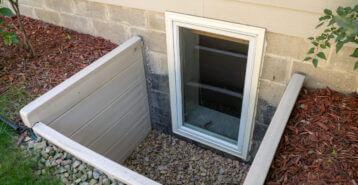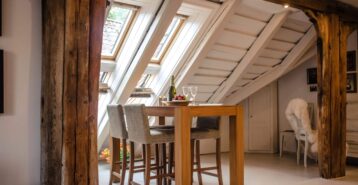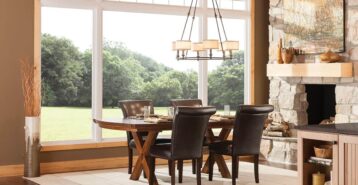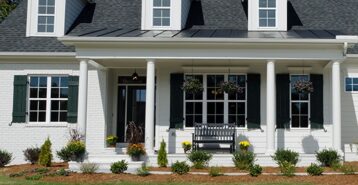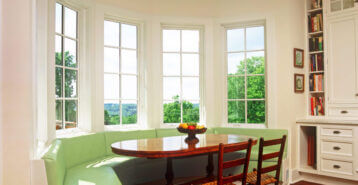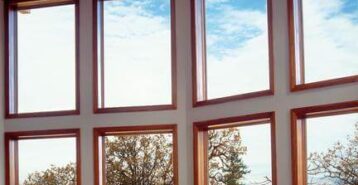Skylight Replacement: Cost and What Else to Know
When replacing an existing skylight, the costs may be lower because the opening and support structures are already in place. The average skylight replacement cost will be anywhere from $1,000 to $3,000, including both labor and materials. Skylights tend to cost more than other window types, largely due to the trickier installation on the roof as opposed to in a wall. However skylights have the potential to save you the most money on your utility bills due to the amount of natural light they let in.
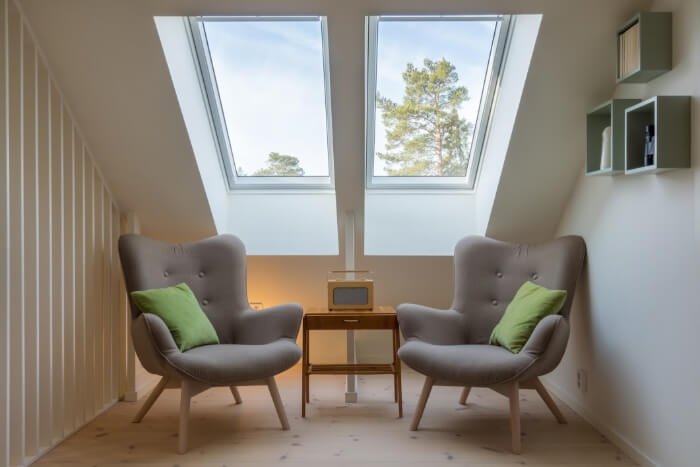
What Impacts Skylight Replacement Costs?
Your particular replacement cost will depend on regional labor costs as well as the material you choose for your skylight frame and glass.
Skylight replacement costs can also include:
- Removing the old skylight.
- Repairing any damage to the roof or surrounding area.
- Labor costs for installing the replacement skylight.
- If you want to be able to open the window.
- Replacing flashing and shingles around the skylight.
- Interior finishing work, if necessary.
There could be additional costs if there is damage around the existing skylight that needs repair, such as water damage or deteriorated flashing.
How Much Does It Cost to Install Skylights?
The cost to install new skylights can range from $1,500 to $3,000 based on the type of skylight window you choose. There are also choices when it comes to window glasses and glazing.

Factors That Impact Costs
Installing a new skylight involves more labor and materials than replacing an existing one. Costs could include:
- Cutting a new opening in the roof.
- Framing the space to fit the skylight.
- Labor costs for installing the skylight.
- Adding flashing and sealing to prevent leaks.
- Installing drywall or other interior finishing around the skylight for a polished look.
- The type of skylight you choose.
These costs can increase significantly for high-end or custom skylight options, for challenging roof lines, or if there are complications such as the need to remove and replace large sections of roofing
Skylight Cost by Type
One of the biggest impacts to your skylight window cost will be the type of skylight you choose. Check out our table below for a general comparison of the different costs associated with installing new versus replacing various three popular types of skylights.
| Type of Skylight | Cost for Replacement | Cost for New Installation |
|---|---|---|
| Fixed Skylight | $800 - $2,000 | $1,500 - $3,000 |
| Ventilated Skylight | $1,000 - $2,500 | $2,000 - $4,000 |
| Tubular Skylight | $600 - $1,800 | $1,000 - $2,500 |
Keep in mind these are rough estimates and actual costs can vary based on location, materials, the complexity of the job, and other factors. These estimates are not including any potential repairs that might be needed in case of replacement, or structural modifications in case of new installations.
What to Know About These Costs
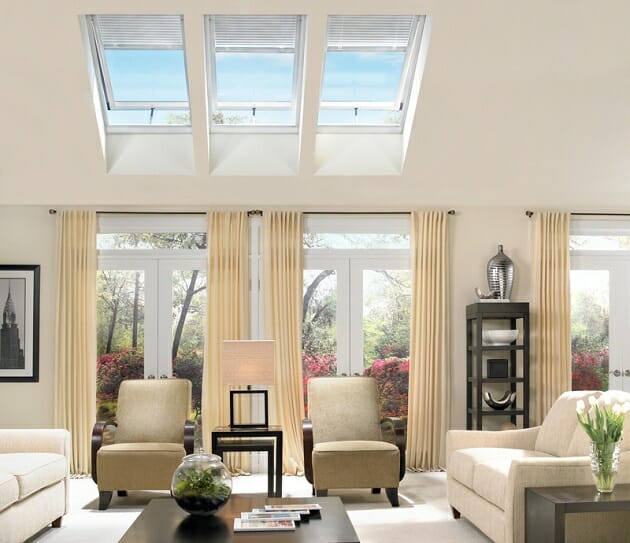
We considered a few of the most important variables as we put these costs together. Here’s what’s taken into consideration in the above cost breakdown.
Fixed Skylight Cost
- New: Higher cost due to the need to cut a new opening, frame, and finish the interior.
- Replacement: Lower cost because the opening already exists.
Ventilated Skylight Cost
- New: Higher on the range due to additional mechanical components for ventilation which might require electrical work for motorized systems.
- Replacement: Slightly higher than fixed skylights due to the complexity of the ventilation mechanism.
Tubular Skylight Cost
- New: Generally lower than traditional skylights because they require a smaller opening and less interior finishing work.
- Replacement: Least expensive to replace due to their smaller size and simpler design.
Skylight Installation Labor Costs
Because skylights typically require cutting into your roof and ceiling, it’s not a job that’s recommended for DIYers. A botched skylight can have serious consequences, including a loss of insulation, ceiling leaks, and mold from condensation. That means that you will need to factor in labor costs in your skylight estimates.
Installation difficulty compounds labor costs. If you have a metal or tile roof, need to cut into roof trusses, or are installing a chase to channel sunlight through the attic space, then the installer will need to work longer, and will consequently charge more for the project.

On average, labor costs will make up 40% of your skylight project total.
It can increase to as much as 60% if the project is particularly complex. For example, if your roof is difficult to work with due to roofing materials or due to being higher or more steeply pitched, that would increase the number of labor hours needed.
Some common problems that can increase labor costs include water damage and discovering the roof needs additional structural supports before the skylight can be installed or replaced.
Other Cost Variables
- Roof Type: Most skylights are made to be installed on roofs with asphalt shingles. If you have a metal or tile roof, you’ll usually be charged more to install extra flashing around the window opening, and that could raise the final cost up to 30%.
- Window Size: Typically, the larger the size of the skylight, the more you can expect to pay. Keep in mind the design impact will be greatly reduced with a smaller window. If your roof is framed with trusses the installers need to cut to fit the window, you’ll need structural changes. That means you’ll need to enlist the expertise of a structural engineer, which will add around $300 to $500.
- Installing a Skylight Chase: In homes with attics, a skylight chase is often used to funnel light from the roof into living spaces. Chases are typically framed with drywall and finished with paint or other coverings, so they cost quite a bit to build. If you want to use a chase in your home skylight, expect to spend around $1,500 more.
- Additional Features and Window Treatments: In addition to the basics, skylights come with optional bells and whistles that add to the final cost. Additionally, some homeowners opt for built-in mini blinds or shades in skylights. They can be turned manually or through remote control. Expect to pay an extra $200 to $400 for this feature.
Is It Cheaper to Put in a Window or a Skylight?
Generally, installing a traditional window is less expensive than a skylight. Standard window installation averages $300 to $1,200 per unit, while skylight installation usually ranges from $800 to $3,000. Skylights require cutting into the roof, reinforcing the structure, and sealing against leaks, which adds labor and material costs. If your main priority is cost savings, a wall window will almost always be the more affordable option.
What Is a Cheaper Alternative to Skylights?
If you want more light without the cost of a skylight, consider solar tubes, also called sun tunnels. These are reflective tubes that funnel natural light from the roof into your home. They are smaller, easier to install, and far less expensive, averaging $500 to $1,000 installed. Other budget-friendly alternatives include adding larger wall windows, transom windows above doors, or glass doors to increase natural light without cutting into the roof.
Is a Skylight Worth the Price?
For many homeowners, skylights are worth the investment because they add natural light, boost ventilation, and can improve resale value. A skylight can make rooms feel larger and brighter, and energy-efficient models can even help lower utility bills by reducing the need for artificial lighting. However, they are more expensive than standard windows and may require additional maintenance over time. Whether it is worth it depends on your goals. If you want more natural light and aesthetic appeal, a skylight can be a great choice.
Ready for Quotes on a Skylight Replacement or Installation?
We recommend getting three to four quotes for a home improvement project. Our research indicates that’s the magic number to get the best price.
You can view our contractor directory and see which window pros are available near you. Or, we can do the research for you! Tap the button below to let Modernize match you with pros in your area.
Compare top-rated windows pros in your area.
Read real homeowner reviews, explore qualifications, and view promotions. Modernize makes it easy to browse professionals and find one that will be perfect for your project.





